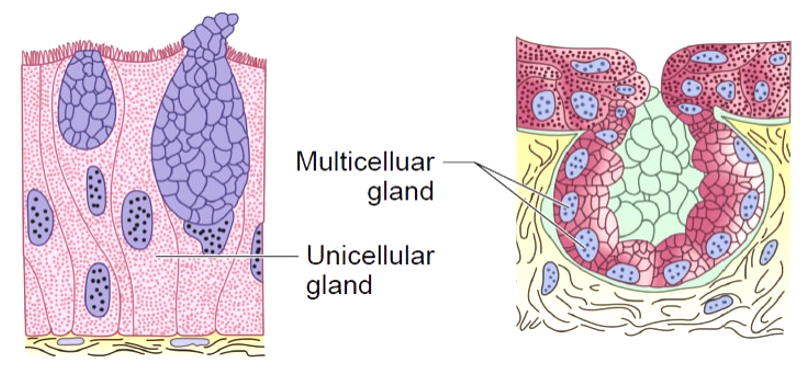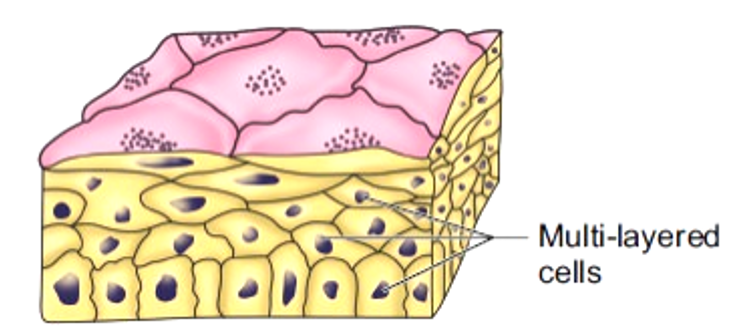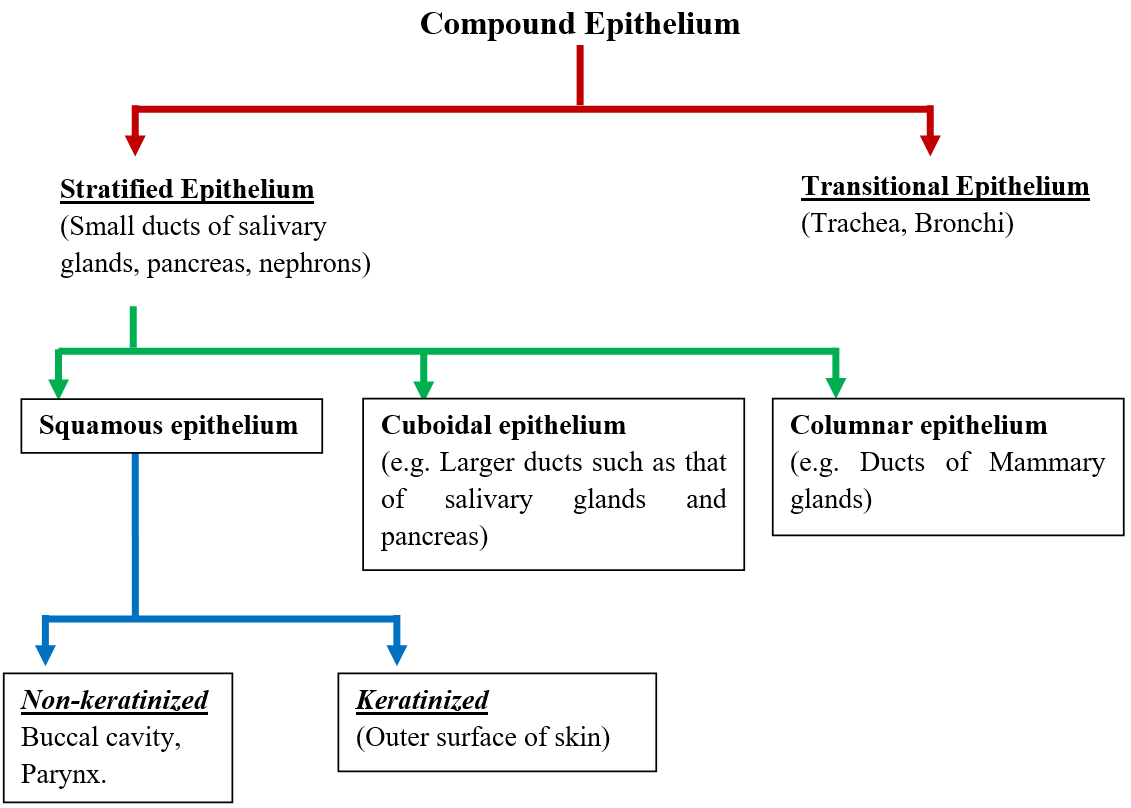Glandular Epithelium
- Glands are secretory structures formed by secretory epithelium.
- Some columnar or cuboidal epithelium gets specialized for secretion and is called glandular cells.
They are of 2 types.
- Unicellular Glands: It consists of small isolated patches of secretory epithelium scattered in the inner lining. (E.g. Goblet cells in the intestinal mucosa.)
- Muticellular glands: It consists of clusters of secretory cells (Salivary glands).
Based on the mode of releasing their secretions, glands are divided into two: Endocrine and Exocrine glands.
- Endocrine glands are ductless glands. Their secretions are released directly into blood or any other body fluids that bath the glands.
- Exocrine glands release their products through specific ducts.

Compound Epithelium
- Compound epithelium is composed of two or more layers of cells (multi–layered).
- It is mostly protective in function.

- They are found on the dry skin surfaces, moist surface off buccal cavity, pharynx, inner lining of glandular ducts and pancreatic ducts.
- They protect the surfaces from mechanical and chemical stress.

Differences between Simple and Compound epithelium
| Simple epithelium | Compound epithelium |
|
|
|
|
|
|
Cell junctions
Adjacent cells in an epithelial tissue are held together by cell junctions. Three types of junctions are usually present.
- Tight junctions: Prevents leaking of substances across two cells.
- Adhering junctions: Cements adjacent cells to keep them together.
- Gap junctions: Permits the communication of adjacent cells by connecting their cytoplasm. This allows movement of ions and some small molecules across the cells.